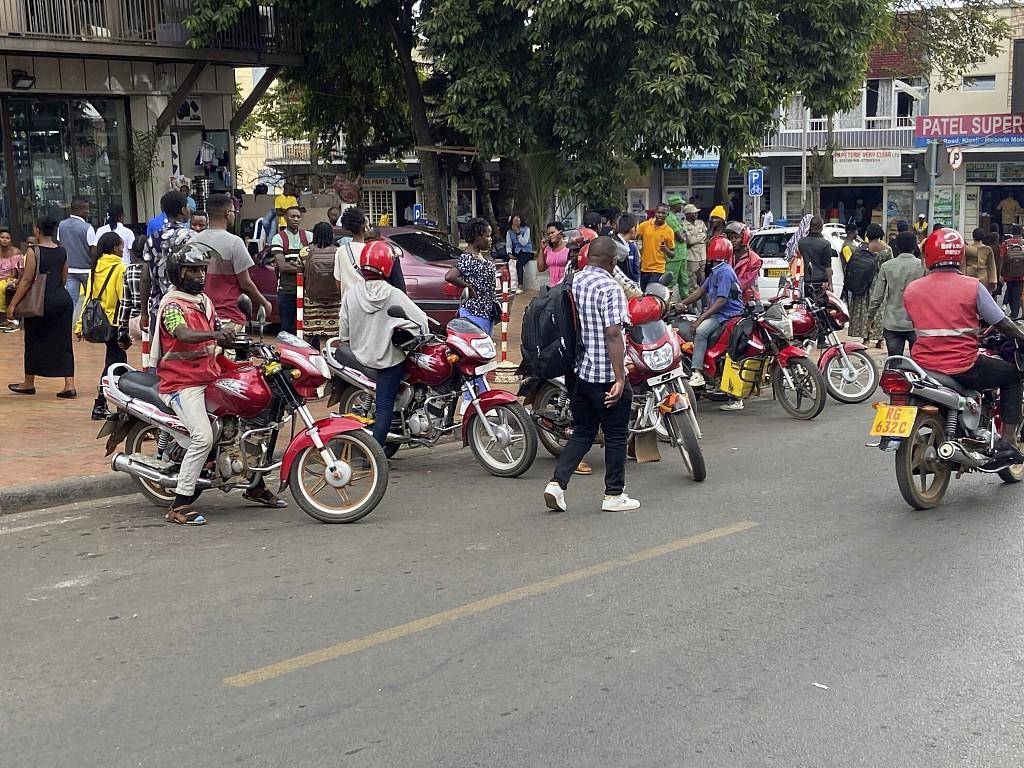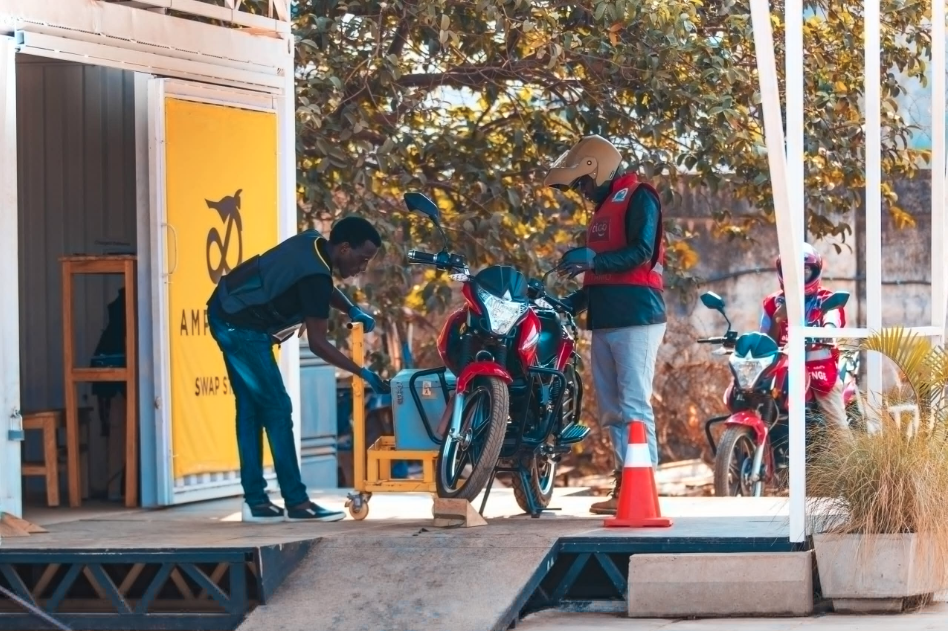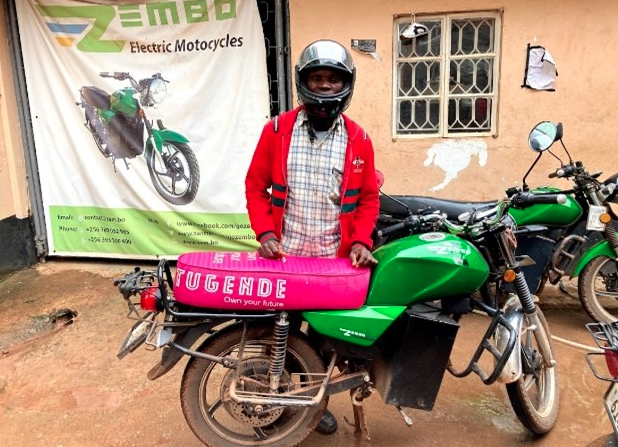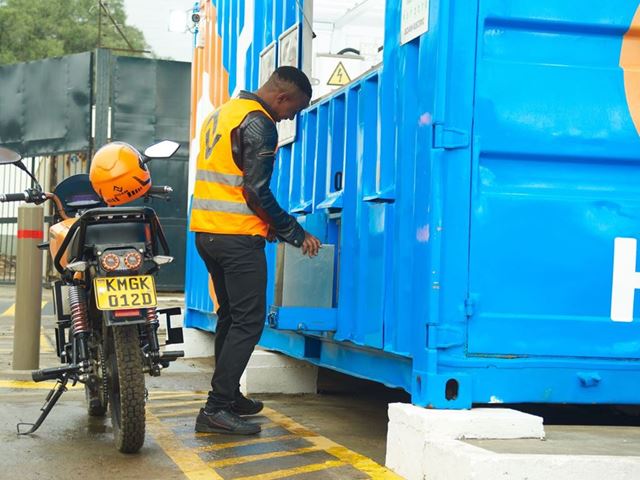
According to recent analysis by the international investment firm McKinsey, the rate of electrification in the mobile transportation sector in the five largest automobile markets in sub-Saharan Africa (excluding South Africa) is projected to reach 35% by 2040. In this transformation, electric motorcycles, being the most representative means of local transportation, are set to lead the way.
Motorcycles are the primary mode of transportation for people in Africa, not only for personal travel but also extending to motorcycle ride-hailing services. In Kenya, the largest motorcycle taxi (“boda boda”) market in Africa, nearly one-tenth of the population relies on motorcycles for their livelihoods. Rwanda in East Africa boasts over 100,000 gasoline-powered motorcycles, constituting 60% of all passenger transportation.

Saving a Year’s Worth of Vehicle Expenses
However, as fuel prices rise, the increasing cost of operation has prompted residents to shift towards purchasing electric motorcycles. An REM business manager in Rwanda stated, “In Rwanda, the price of one liter of gasoline is approximately $1.40, offering a range of around 45 kilometers, while an electric motorcycle can travel 70 kilometers for just $1.50. By switching to electric motorcycles, drivers can save about $1,200 annually,” effectively saving up enough for a vehicle within a year.
The significant cost advantage has led to a surge in the adoption of electric motorcycles in the African market. According to the “Powering Renewable Energy” think tank’s latest report, the African motorcycle market is expected to grow to $5.07 billion by 2027, with electric motorcycles becoming the predominant product in the sustainable transportation transformation south of the Sahara.

Moreover, Rwanda set a goal in 2019 to fully electrify motorcycle taxi fleets. To achieve this, the government has begun providing tax incentives and other initiatives, such as capping electricity prices at charging stations, providing rent-free land for charging station construction, offering parking and driving lane privileges for electric vehicles, and restricting emission-polluting vehicles. These measures have further catalyzed the potential of the electric two-wheeler market.
Surge in Orders
The replacement of products is clearly reflected in the order changes of manufacturing enterprises. Ampersand, a local startup in Rwanda founded in 2018 producing electric motorcycles, batteries, and swapping stations, revealed that due to the impact of operating costs, an increasing number of motorcycle taxi drivers are switching to electric motorcycles. Not only does this lead to a quicker return on investment, but the reduced operating costs also increase the income of motorcycle taxi drivers by around 30%.

Furthermore, Ampersand’s own fleet has grown from 150 electric motorcycles a year ago to the current 1,250 units, nearly a nine-fold increase. REM’s motorcycle count has also escalated from 8 units in 2020 to the current 300 units. Both companies have a substantial backlog of orders, with Ampersand having over 9,000 customers waiting to purchase vehicles and REM with over 2,000 users queuing for motorcycle modifications or new purchases.

Ampersand’s skyrocketing orders directly illustrate the growing demand for electric two-wheelers in the African market.
Insufficient Power Supply
The commercial value and sustainable potential of Africa’s new energy motorcycle market are evident, but the lack of battery charging stations and issues with power supply restrict the proliferation of electric motorcycles. Inadequate access to basic electricity in 48% of the African region makes it challenging to establish a reliable charging network.

Mr. Enserguimwa, a motorcycle taxi driver from Rwanda, mentioned that while battery swapping stations are common in the capital city of Kigali, they are less frequent in other provinces. As a result, he sometimes hesitates to transport passengers from Kigali to neighboring provinces for fear of running out of power in remote areas.
Local governments and enterprises are accelerating the construction of charging stations and improving power infrastructure. Once motorcycle taxi drivers can efficiently recharge, the electric two-wheeler market will further expand.

High Demand in Africa’s Electric Two-Wheeler Market with rapid development, still in its infancy, holds tremendous prospects. Currently, over 90% of electric motorcycles in Africa are imported from China and India. If Chinese tech companies combine their technological and manufacturing advantages with Africa’s population and market advantages, they can optimally allocate resources and offerings in the African market.
In June of this year, a delegation led by Benin’s Minister of Foreign Affairs, Aurélien Agbénonci, visited Changzhou, Jiangsu, signing a strategic cooperation agreement with local companies. Their plan over the next five years is to sell 500,000 electric motorcycles in Africa, totaling $1 billion in value. Their business covers emerging markets in Benin, Uganda, Kenya, and more. This underscores the significant opportunities for Chinese exports in Africa’s blue ocean market.






